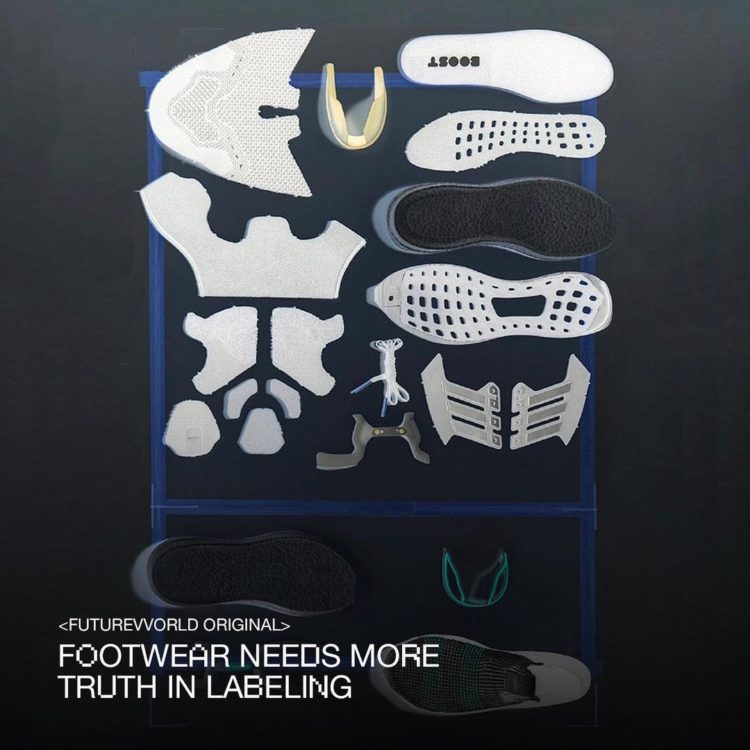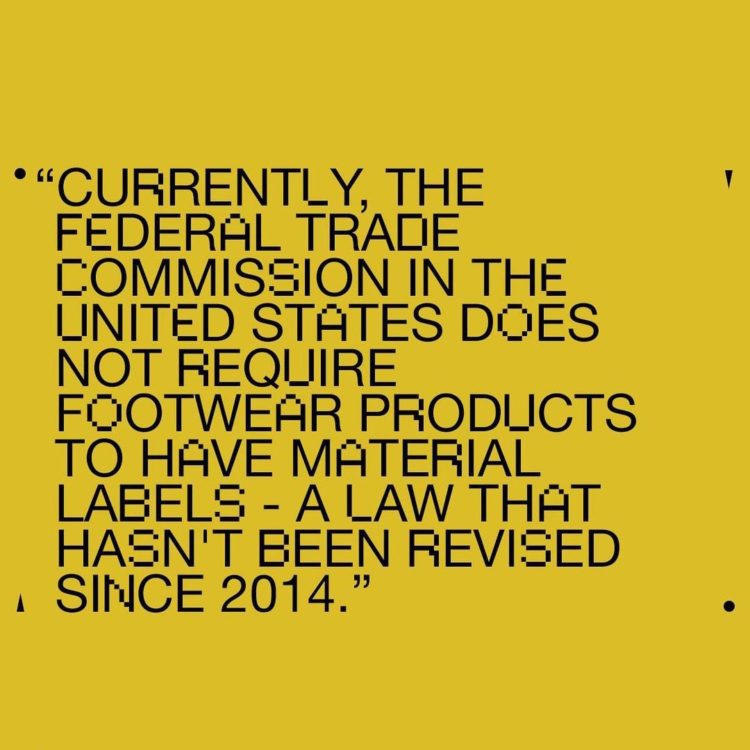This post may contain affiliate links. Please read our disclosure policy.
The footwear world continues to grow at an unprecedented rate. The demand, hype, and innovations within the sneaker space have reached new heights. With the likes of groundbreaking creations such as the Nike Cosmic Unity, adidas 4D, and even the Nike Air Zoom AlphaFly NEXT%, consumers and environmental activists are seeking more transparency from brands.
FUTUREVVORLD‘s Daniel Navetta pens the importance of a truth overhaul in labeling and what needs to change if brands truly care about sustainability and the environment.
“It all leads me to wonder: why can’t we standardize this info into a fashion equivalent to the nutrition facts that are mandated on the food products we consume on a daily basis?” Navetta questions. “As brands begin to move, some quicker than others, to react to the fashion industry’s environmental impact by introducing new product innovations with slick marketing terminology, we’re still often uninformed with regards to the material makeup of most sneakers.”
Navetta adds that the Federal Trade Commission currently doesn’t require footwear products to have material labels. The law was last revised in 2014. Since then, the sustainable approach in footwear has grown exponentially.
In essence, footwear labeling would be akin to food packaging with certified and regulated descriptions. The importance of a revolution like this in footwear is long overdue.
As Navetta points out, these footwear brands need to do more if they truly want to be “clean.”
Read the entire article by Navetta on FUTUREVVORLD for more. Let us know your thoughts on the subject matter over on social media.









